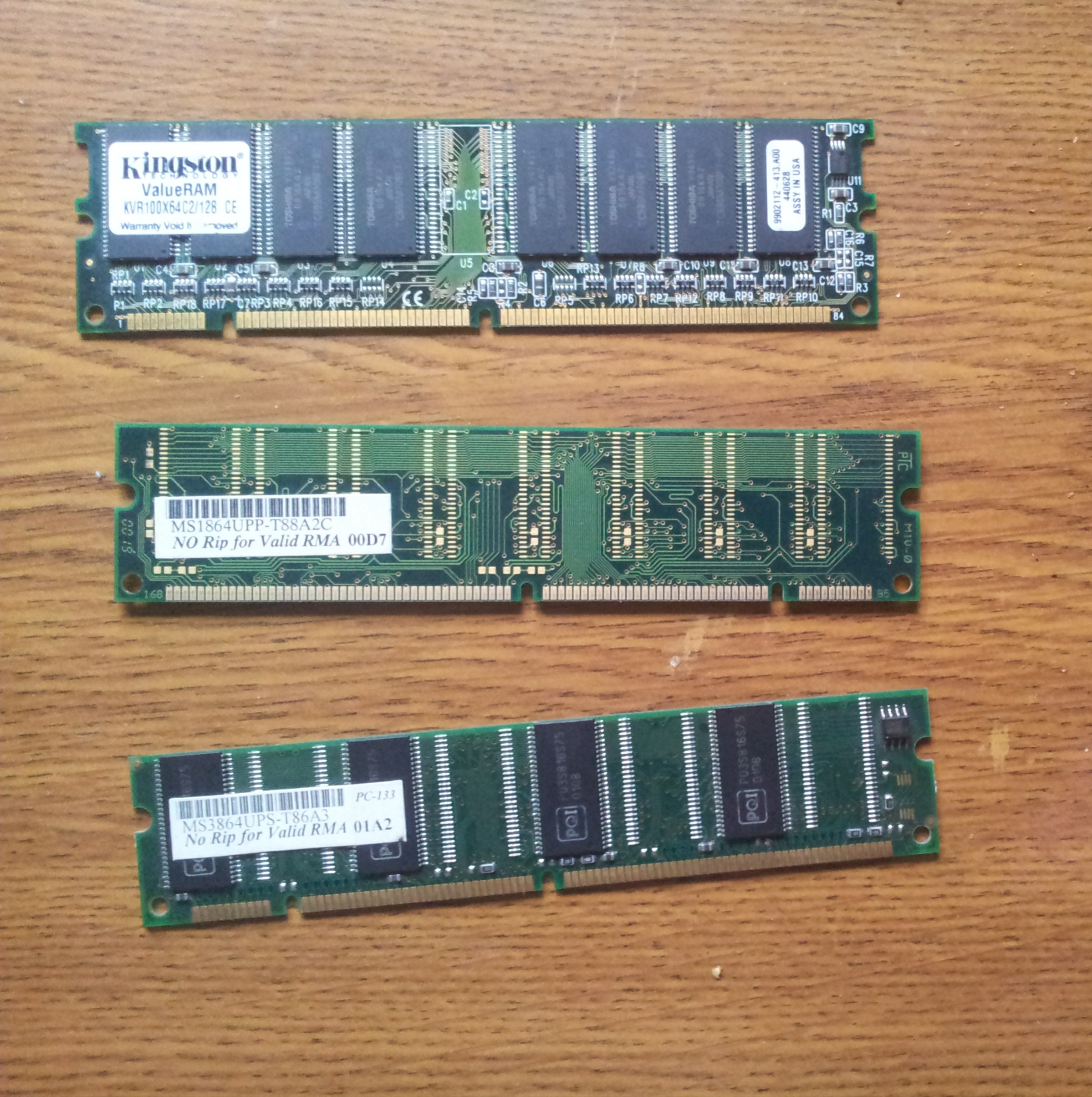|
Fast Cycle DRAM
Fast Cycle DRAM (FCRAM) is a type of synchronous dynamic random-access memory developed by Fujitsu and Toshiba. FCRAM has a shorter data access latency compared to contemporary commodity SDRAMs; and is used in where the lower data access latency is more desirable than low cost and high capacity (FCRAM is a moderate cost and capacity speciality DRAM). FCRAM achieves its low latency by dividing each row into multiple sub-rows, of which only one is activated during a row-activation operation. This had the effect of reducing the effective array size, improving the access time. FCRAM has a DDR SDRAM-like command set to enable memory controllers that support both DDR SDRAM and FCRAM. It also has a standard dual in-line memory module (DIMM). References * Jacob, Bruce et al. (2008). ''Memory Systems: Cache, DRAM, Disk''. Morgan Kaufmann Publishers Morgan Kaufmann Publishers is a Burlington, Massachusetts (San Francisco, California until 2008) based publisher specializing in computer s ... [...More Info...] [...Related Items...] OR: [Wikipedia] [Google] [Baidu] |
Synchronous Dynamic Random-access Memory
Synchronous dynamic random-access memory (synchronous dynamic RAM or SDRAM) is any DRAM where the operation of its external pin interface is coordinated by an externally supplied clock signal. DRAM integrated circuits (ICs) produced from the early 1970s to the early 1990s used an ''asynchronous'' interface, in which input control signals have a direct effect on internal functions delayed only by the trip across its semiconductor pathways. SDRAM has a ''synchronous'' interface, whereby changes on control inputs are recognised after a rising edge of its clock input. In SDRAM families standardized by JEDEC, the clock signal controls the stepping of an internal finite-state machine that responds to incoming commands. These commands can be pipelined to improve performance, with previously started operations completing while new commands are received. The memory is divided into several equally sized but independent sections called ''banks'', allowing the device to operate on a memor ... [...More Info...] [...Related Items...] OR: [Wikipedia] [Google] [Baidu] |
Toshiba
is a Japanese multinational electronics company headquartered in Minato, Tokyo. Its diversified products and services include power, industrial and social infrastructure systems, elevators and escalators, electronic components, semiconductors, hard disk drives, printers, batteries, lighting, as well as IT solutions such as quantum cryptography. It was formerly also one of the biggest manufacturers of personal computers, consumer electronics, home appliances, and medical equipment. The Toshiba name is derived from its former name, Tokyo Shibaura Denki K.K. which in turn was a 1939 merger between Shibaura Seisaku-sho (founded in 1875) and Tokyo Denki (founded in 1890). The company name was officially changed to Toshiba Corporation in 1978. A technology company with a long history and sprawling businesses, Toshiba is a household name in Japan and has long been viewed as a symbol of the country's technological prowess post-World War II. As a semiconductor company and the i ... [...More Info...] [...Related Items...] OR: [Wikipedia] [Google] [Baidu] |
DDR SDRAM
Double Data Rate Synchronous Dynamic Random-Access Memory (DDR SDRAM) is a double data rate (DDR) synchronous dynamic random-access memory (SDRAM) class of memory integrated circuits used in computers. DDR SDRAM, also retroactively called DDR1 SDRAM, has been superseded by DDR2 SDRAM, DDR3 SDRAM, DDR4 SDRAM and DDR5 SDRAM. None of its successors are forward or backward compatible with DDR1 SDRAM, meaning DDR2, DDR3, DDR4 and DDR5 memory modules will not work on DDR1-equipped motherboards, and vice versa. Compared to single data rate ( SDR) SDRAM, the DDR SDRAM interface makes higher transfer rates possible through more strict control of the timing of the electrical data and clock signals. Implementations often have to use schemes such as phase-locked loops and self-calibration to reach the required timing accuracy. The interface uses double pumping (transferring data on both the rising and falling edges of the clock signal) to double data bus bandwidth without a cor ... [...More Info...] [...Related Items...] OR: [Wikipedia] [Google] [Baidu] |
Dual In-line Memory Module
A DIMM (Dual In-line Memory Module) is a popular type of memory module used in computers. It is a printed circuit board with one or both sides (front and back) holding DRAM integrated circuit, chips and Pin (electronics), pins. The vast majority of DIMMs are manufactured in compliance with JEDEC memory standards, although there are proprietary DIMMs. DIMMs come in a variety of speeds and capacities, and are generally one of two lengths: PC, which are , and laptop (SO-DIMM), which are about half the length at . History DIMMs (Dual In-line Memory Module) were a 1990s upgrade for SIMMs (Single In-line Memory Modules) as Intel P5 (microarchitecture), P5-based Pentium processors began to gain market share. The Pentium had a 64-bit bus (computing), bus width, which would require SIMMs installed in matched pairs in order to populate the data bus. The processor would then access the two SIMMs in parallel. DIMMs were introduced to eliminate this disadvantage. The contacts on SIMMs on b ... [...More Info...] [...Related Items...] OR: [Wikipedia] [Google] [Baidu] |
Morgan Kaufmann Publishers
Morgan Kaufmann Publishers is a Burlington, Massachusetts (San Francisco, California until 2008) based publisher specializing in computer science and engineering content. Since 1984, Morgan Kaufmann has been publishing contents on information technology, computer architecture, data management, computer networking, computer systems, human computer interaction, computer graphics, multimedia information and systems, artificial intelligence, computer security, and software engineering. Morgan Kaufmann's audience includes the research and development communities, information technology (IS/IT) managers, and students in professional degree programs. The company was founded in 1984 by publishers Michael B. Morgan and William Kaufmann and computer scientist Nils Nilsson. It was held privately until 1998, when it was acquired by Harcourt General and became an imprint of the Academic Press, a subsidiary of Harcourt. Harcourt was acquired by Reed Elsevier in 2001; Morgan Kaufmann is now ... [...More Info...] [...Related Items...] OR: [Wikipedia] [Google] [Baidu] |



